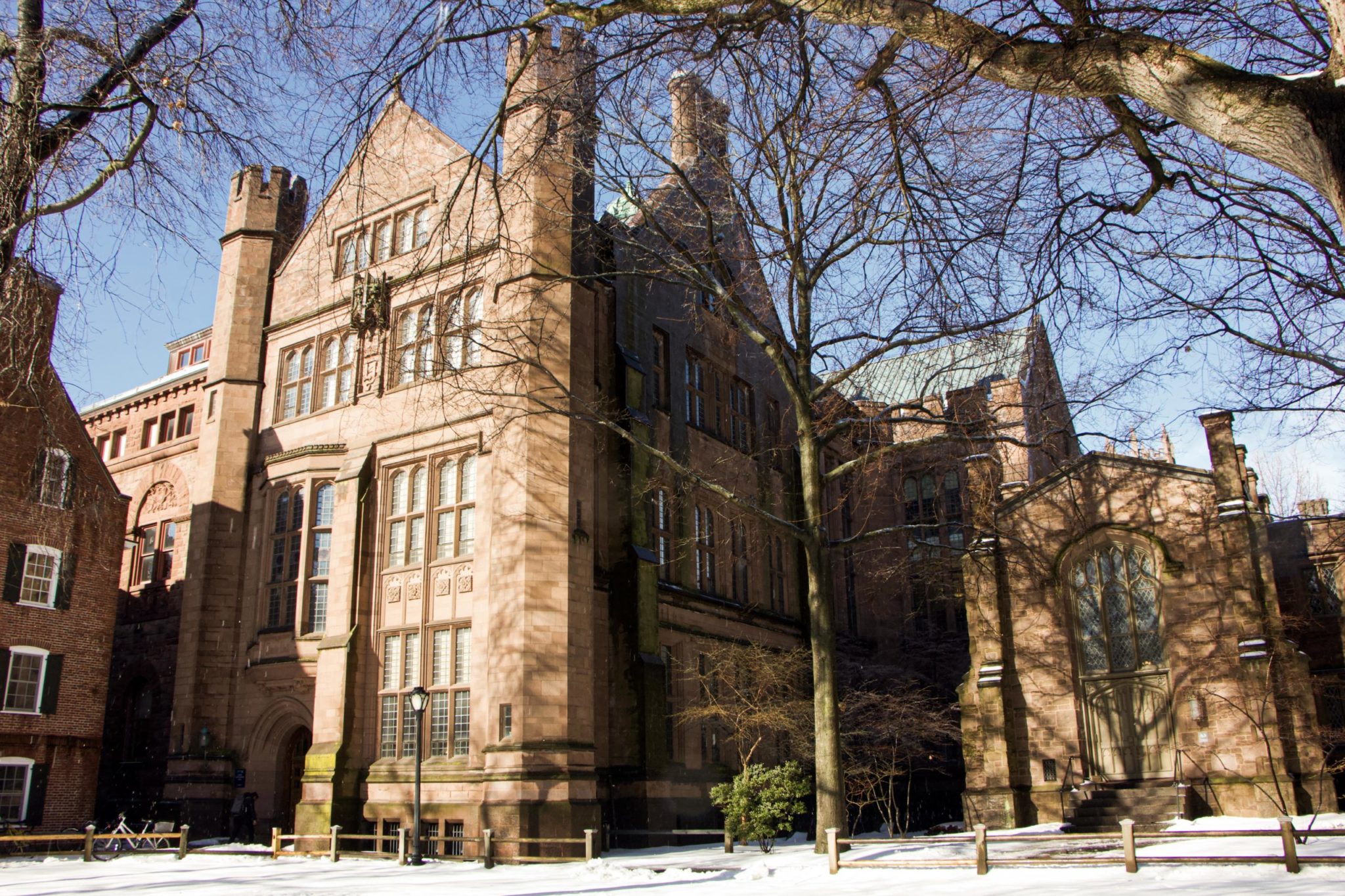
Steven Orientale
Despite a common tendency to characterize white nationalists as “lone wolves,” historian Kathleen Belew GRD ’11 stressed that people should not view these actors as isolated individuals but see them for what she says they are — members of a cohesive, unrelenting movement.
Yale students, faculty and community members filed into room 102 of Linsly-Chittenden Hall on Thursday to hear Belew deliver a talk titled “Race, War, Apocalypse and Futurity in the White Power Movement.” Belew is a research fellow at the Center for Advanced Study of the Behavioral Sciences at Stanford University and a renowned expert on the white power movement. She authored “Bring the War Home: The White Power Movement and ParamilitaryAmerica.” The New York Times reviewed it as a “gripping study of white power” and The Guardian has ranked it among one of its best books of 2018. On Thursday, Belew spoke to nearly two dozen attendees about the origins of today’s white power movement, which she traced to the Vietnam War.
“Instead of seeing a broad and united group of people,” Belew explained, “we see a series of bad apples or lone wolves.”
Belew reminded the audience that just last week, three white power activists were arrested en route to a gun rights rally in Richmond, Virginia. Their hope was to use violence to incite a race war. Some rally participants even carried signs reading “boogaloo” — a shorthand term for a future civil war raged across America’s color line.
Of the 22,000 rally attendees, many carried military-style rifles, pistols, sniper rifles and grenade launchers. They claimed that they were not part of the white power movement. But Belew believes Americans must realize that this broad-based movement of hate begins with a small radicalized center but values and messaging carries over to the fringes of society.
“Membership numbers are a terrible way of figuring out the power of white power movements,” argues Belew. She added that in the 1960s and 70s, “many would agree with the ideas of the KKK even if they don’t buy their [subscriptions and merchandise].”
Even in the 20th century, Belew’s research shows that the white power “movement connected people in every region in the country — from those in the suburbs to cities to rural mountaintops.” Its current strategies, such as computer messaging, creates a sort of leaderless resistance that evades governmental crackdowns.
Belew shifted her talk to the importance of vocabulary in delineating white power from white supremacy. She explained that white power is a transnational movement calling for the violent overthrow of the federal government. In contrast, white supremacy is a complex web of ideological systems that envisions prosperity for whites — wealth, freedom, happiness, she said. Belew said both groups are inherently racist, but, unlike adherents of white power, not all white supremacists condone violence.
The resulting issue, Belew claimed, is a public underestimation of the threat of white power — the end goal of white power is a transnational Aryan unity, not just an extreme form of patriotism. Whereas the Tree of Life synagogue shooting is seen as anti-Semitic, the Christchurch mosque shooting as Islamophobic and border militias as neutral, Belew said she sees them all connected by the common white power ideology.
Throughout the talk, Belew traced today’s white power movement to violent examples from the 1970s and 1980s. These included the 1995 Oklahoma City bombing, the 1992 Ruby Ridge siege, and the 1988 Fort Smith, Arkansas sedition trial. Such atrocities garner media attention and attract more individuals to the movement, Belew noted.
Head of Ezra Stiles College Stephen Pitti, who was in attendance, asked Belew “about the intellectual wing of this movement, which is the production of more credible policy papers and think tank pieces.” Belew responded that “in media and law, ideology is being spun up, transported to think tanks and outlets.” Still, she said that she has not seen any “think tanks that are reputable experts, but are instead populated by immigrant-afraid people.”
In response to another audience question, Belew explained the dangers of attributing a terrorist attack to one person. The question of “whether we should put them on the no-fly list,” for example, is risky according to Belew. Such individuals already feel disconnected from society and are fearful of the government taking away their rights. Belew explained that simply taking more rights away creates the possibility of violence, but she still advocates for legal change.
But as a society, Belew said public recognition of white power activities is a major threat to the movement. Events like Charlottesville catch the public eye, but Belew recognizes the existence of an ever-growing militarized underground. For this reason, she said it is important to confront the white power movement in the United States.
Belew ended on an optimistic note: “[the] sustained conversation around the emergence of the movement … when we do put the stories together of the Tree of Life survivors, Christchurch survivors and El Paso survivors, open the way to a different coalition in politics.”
Event attendee Adrien Rolet ’23 said that Belew’s talk helped him “view [the white power movement] in scientific terms and helped rationalize it and think about solutions.”
Belew is on research leave from the University of Chicago from 2019–20.
Talat Aman | talat.aman@yale.edu







